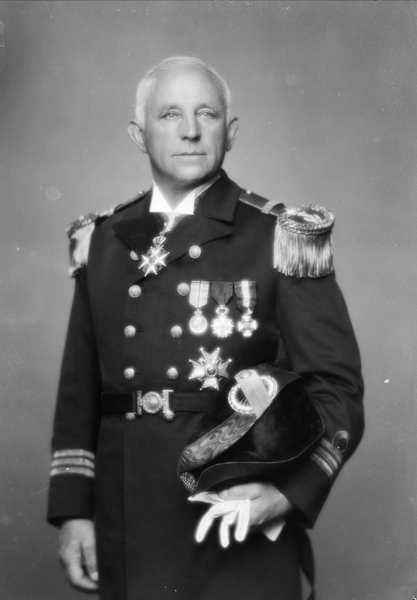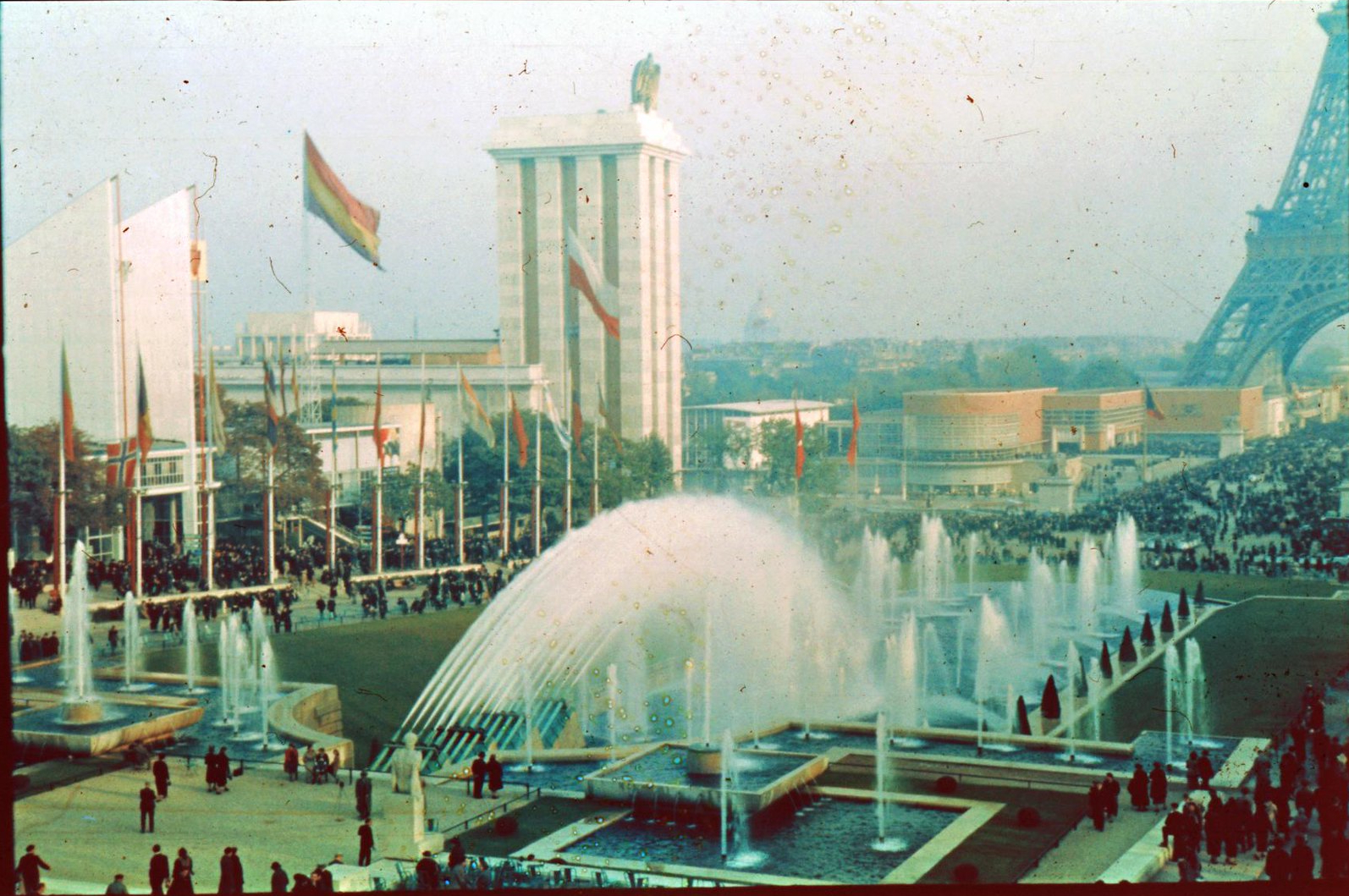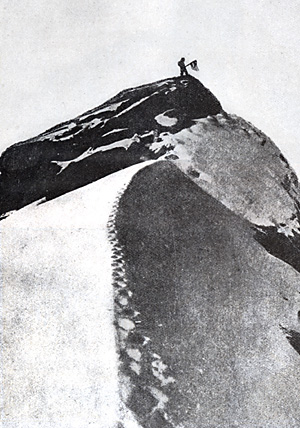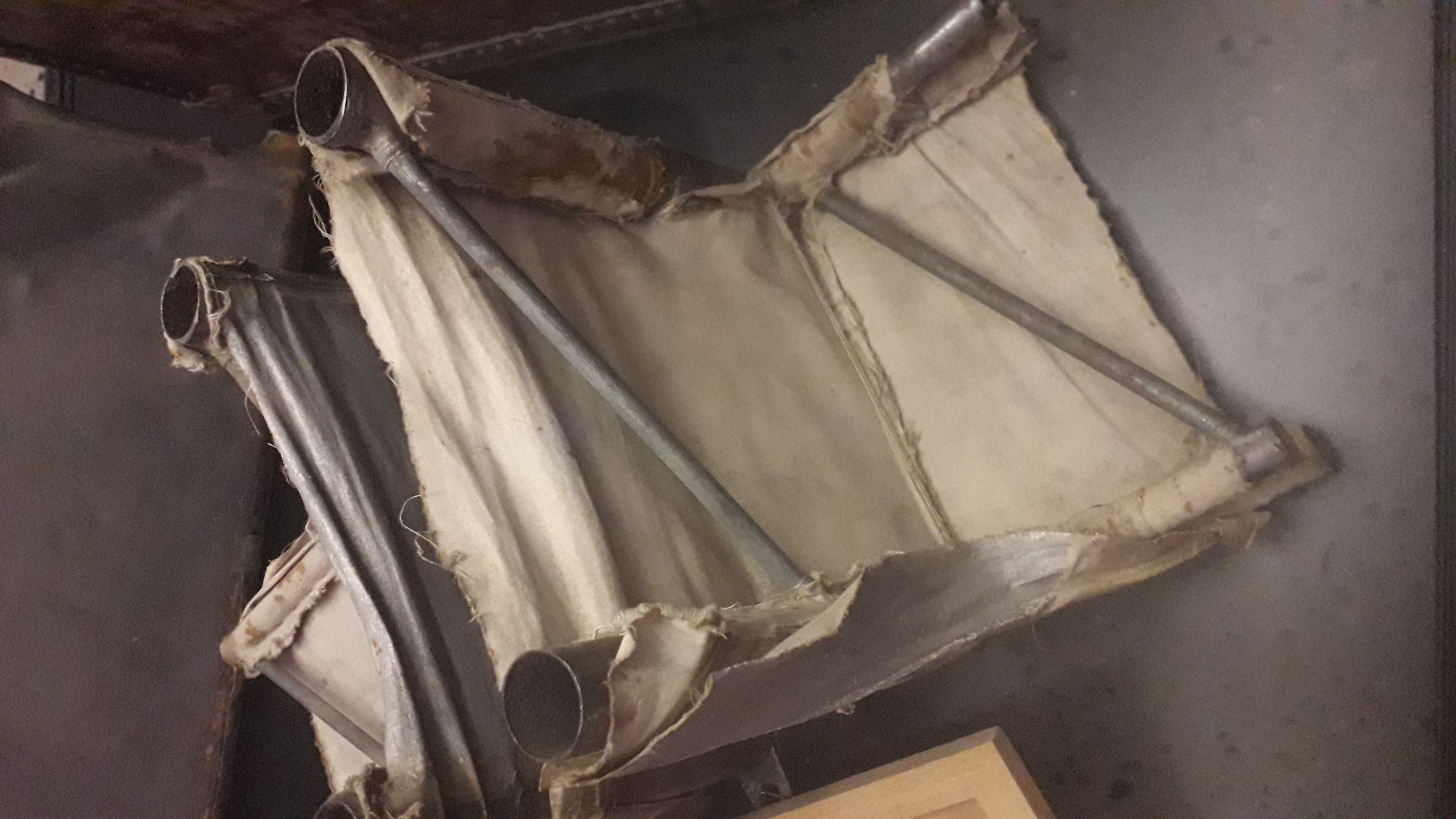|
Oscar Wisting
Oscar Adolf Wisting (6 June 1871 – 5 December 1936) was a Norwegian Naval officer and polar explorer. Together with Roald Amundsen he was the first person to reach both the North and South Poles. Biography Oscar Wisting was born in Larvik, in Vestfold county, Norway. He was the son of Ola Martin Olsen Wisting (1843–1927) and Abigael Helene Andersen (1843–85). He became the eldest of 13 children. His father ran a trucking business. At the age of sixteen, he went to sea and in 1892 joined the Royal Norwegian Navy. He was working as a naval gunner at Karljohansvern, the naval base in Horten during 1909 when Roald Amundsen asked him to go north with him on his forthcoming North Pole expedition. Amundsen later secretly changed his plans. Wisting went to sea believing they were heading for the North Pole. Instead he learned that they were going south to pick up the race with Robert Falcon Scott to the South Pole. As a participant in Amundsen's South Pole expediti ... [...More Info...] [...Related Items...] OR: [Wikipedia] [Google] [Baidu] |
Norwegian Flag
The national flag of Norway ( nb, Norges flagg; nn, Noregs flagg; ) is red with a navy blue Scandinavian cross fimbriated in white that extends to the edges of the flag; the vertical part of the cross is shifted to the hoist side in the style of the ''Dannebrog'', the flag of Denmark. History It is difficult to establish what the earliest flag of Norway looked like. During ancient times countries did not fly flags. Kings and other rulers flew flags, especially in battle. Saint Olav used a serpent within a white mark at the Battle of Nesjar. Prior to this the raven or dragon was used. Magnus the Good used the same mark as Saint Olav. Harald Hardrade used the raven banner. This flag was flown by various Viking chieftains and other Scandinavian rulers during the 9th, 10th, and 11th centuries AD. Inge used a red lion on gold. Sverre used an eagle in gold and red. The earliest known flag which could be described as a national flag of Norway is the one used today as the Roya ... [...More Info...] [...Related Items...] OR: [Wikipedia] [Google] [Baidu] |
Mount Wisting
Mount Wisting () is a rock Summit (topography), peak (2,580 m), the northwesternmost summit of the massif at the head of Amundsen Glacier in the Queen Maud Mountains. In November 1911, a number of mountain peaks in this general vicinity were observed and positioned by the South Pole Party under Roald Amundsen. Amundsen named one of them for Oscar Wisting, a member of the party. The peak described was mapped by United States Geological Survey (USGS) from surveys and U.S. Navy aerial photography, 1960–64. For the sake of historical continuity and to commemorate the Norwegian exploration in this area, the Advisory Committee on Antarctic Names (US-ACAN) has selected this feature to be designated Mount Wisting. Other peaks in the massif have been named for members of Amundsen's South Pole Party. Mountains of the Ross Dependency Amundsen Coast {{Ross-mountain-stub ... [...More Info...] [...Related Items...] OR: [Wikipedia] [Google] [Baidu] |
Haakon VII
Haakon VII (; born Prince Carl of Denmark; 3 August 187221 September 1957) was the King of Norway from November 1905 until his death in September 1957. Originally a Danish prince, he was born in Copenhagen as the son of the future Frederick VIII of Denmark and Louise of Sweden. Prince Carl was educated at the Royal Danish Naval Academy and served in the Royal Danish Navy. After the 1905 dissolution of the union between Sweden and Norway, Prince Carl was offered the Norwegian crown. Following a November plebiscite, he accepted the offer and was formally elected King of Norway by the Storting. He took the Old Norse name ''Haakon'' and ascended to the throne as Haakon VII, becoming the first independent Norwegian monarch since 1387. As king, Haakon gained much sympathy from the Norwegian people. Although the Constitution of Norway vests the King with considerable executive powers, in practice Haakon confined himself to non-partisan roles without interfering in politics, a practi ... [...More Info...] [...Related Items...] OR: [Wikipedia] [Google] [Baidu] |
South Pole Medal
The South Pole Medal ( no, Sydpolsmedaljen) or Medal Commemorating the 1910–1911 ''Fram'' Expedition to the South Pole (''Medalje til erindring om "Frams" ekspedisjon til Sydpolen 1910–1911'') is a Norwegian medal established by Haakon VII of Norway on August 20, 1912 to recognize participants in Roald Amundsen's South Pole expedition.Lampe, C. (ed.). 1927. ''Norges statskalender for året 1927''. Oslo: H. Aschehoug & Co (W. Nygaard), pp. 1053–1054. The medal was awarded to participants in the exhibition on the day it was instituted. The medal was designed by the engraver Ivar Throndsen. Description The South Pole Medal was cast in gold, silver, and bronze,Støren, Ragnvald, & Hans Jørgen Holst. 1937. ''Myntgravør Ivar Throndsens medaljer, jetonger og merker''. Oslo : I kommisjon hos H. Aschehoug, p. 149. and it was awarded in gold.Lampe, C. (ed.). 1913. ''Norges statskalender for aaret 1913''. Kristiania: Aschehoug & Co (W. Nygaard), pp. 1093–1094. The obverse depicts Ki ... [...More Info...] [...Related Items...] OR: [Wikipedia] [Google] [Baidu] |
Fram (ship)
''Fram'' ("Forward") is a ship that was used in expeditions of the Arctic and Antarctic regions by the Norwegian explorers Fridtjof Nansen, Otto Sverdrup, Oscar Wisting, and Roald Amundsen between 1893 and 1912. It was designed and built by the Scottish-Norwegian shipwright Colin Archer for Fridtjof Nansen's 1893 Arctic expedition in which the plan was to freeze ''Fram'' into the Arctic ice sheet and float with it over the North Pole. ''Fram'' is preserved as a museum ship at the Fram Museum in Oslo, Norway. Construction Nansen's ambition was to explore the Arctic farther north than anyone else. To do that, he would have to deal with a problem that many sailing on the polar ocean had encountered before him: the freezing ice could crush a ship. Nansen's idea was to build a ship that could survive the pressure, not by pure strength, but because it would be of a shape designed to let the ice push the ship up, so it would "float" on top of the ice. ''Fram'' is a three-masted sch ... [...More Info...] [...Related Items...] OR: [Wikipedia] [Google] [Baidu] |
Oslo
Oslo ( , , or ; sma, Oslove) is the capital and most populous city of Norway. It constitutes both a county and a municipality. The municipality of Oslo had a population of in 2022, while the city's greater urban area had a population of in 2019, and the metropolitan area had an estimated population of in 2021. During the Viking Age the area was part of Viken. Oslo was founded as a city at the end of the Viking Age in 1040 under the name Ánslo, and established as a ''kaupstad'' or trading place in 1048 by Harald Hardrada. The city was elevated to a bishopric in 1070 and a capital under Haakon V of Norway around 1300. Personal unions with Denmark from 1397 to 1523 and again from 1536 to 1814 reduced its influence. After being destroyed by a fire in 1624, during the reign of King Christian IV, a new city was built closer to Akershus Fortress and named Christiania in honour of the king. It became a municipality ('' formannskapsdistrikt'') on 1 January 1838. The city fu ... [...More Info...] [...Related Items...] OR: [Wikipedia] [Google] [Baidu] |
Fram Museum
The Fram Museum ( no, Frammuseet) is a museum telling the story of Norwegian polar exploration. It is located on the peninsula of Bygdøy in Oslo, Norway. Fram Museum is in an area with several other museums including the Kon-Tiki Museum, the Norwegian Museum of Cultural History, the Viking Ship Museum and the Norwegian Maritime Museum. Bygdøy Royal Estate, the official summer residence of the King of Norway, and historic Oscarshall are also located nearby. The Fram Museum was inaugurated on 20 May 1936. It honours Norwegian polar exploration in general and three great Norwegian polar explorers in particular – Fridtjof Nansen, Otto Sverdrup and Roald Amundsen. The museum also exhibits images of the fauna of the polar regions, such as polar bears and penguins. The Fram Museum is centred principally on the original exploration vessel ''Fram''. The original interior of ''Fram'' is intact and visitors can go inside the ship to view it. ''Fram'' was commissioned, designed, a ... [...More Info...] [...Related Items...] OR: [Wikipedia] [Google] [Baidu] |
Richard E
Richard is a male given name. It originates, via Old French, from Frankish language, Old Frankish and is a Compound (linguistics), compound of the words descending from Proto-Germanic language, Proto-Germanic ''*rīk-'' 'ruler, leader, king' and ''*hardu-'' 'strong, brave, hardy', and it therefore means 'strong in rule'. Nicknames include "Richie", "Dick (nickname), Dick", "Dickon", "Dickie (name), Dickie", "Rich (given name), Rich", "Rick (given name), Rick", "Rico (name), Rico", "Ricky (given name), Ricky", and more. Richard is a common English, German and French male name. It's also used in many more languages, particularly Germanic, such as Norwegian, Danish, Swedish, Icelandic, and Dutch, as well as other languages including Irish, Scottish, Welsh and Finnish. Richard is cognate with variants of the name in other European languages, such as the Swedish "Rickard", the Catalan "Ricard" and the Italian "Riccardo", among others (see comprehensive variant list below). People ... [...More Info...] [...Related Items...] OR: [Wikipedia] [Google] [Baidu] |
Robert Peary
Robert Edwin Peary Sr. (; May 6, 1856 – February 20, 1920) was an American explorer and officer in the United States Navy who made several expeditions to the Arctic in the late 19th and early 20th centuries. He is best known for, in April 1909, leading an expedition that claimed to be the first to have reached the geographic North Pole. Explorer Matthew Henson, part of the expedition, is thought to have reached what they believed to be the North Pole narrowly before Peary. Peary was born in Cresson, Pennsylvania, but, following his father's death at a young age, was raised in Portland, Maine. He attended Bowdoin College, then joined the United States Coast and Geodetic Survey as a draftsman. He enlisted in the navy in 1881 as a civil engineer. In 1885, he was made chief of surveying for the Nicaragua Canal, which was never built. He visited the Arctic for the first time in 1886, making an unsuccessful attempt to cross Greenland by dogsled. In the Peary expedition to Green ... [...More Info...] [...Related Items...] OR: [Wikipedia] [Google] [Baidu] |
Frederick Cook
Frederick Albert Cook (June 10, 1865 – August 5, 1940) was an American explorer, physician, and ethnographer who claimed to have reached the North Pole on April 21, 1908. That was nearly a year before Robert Peary, who similarly claimed to have reached the North Pole on April 6, 1909. Both men's accounts have been disputed ever since. His expedition was the first, and the only one with a United States national, to find a previously unknown, to people of European descent, North American Arctic island, Meighen Island. In December 1909, after reviewing Cook's limited records, a commission of the University of Copenhagen ruled his claim unproven. In 1911, Cook published a memoir of his expedition that continued his claim. His account of reaching the summit of Denali (Mount McKinley) in Alaska has also been discredited. Biography Cook was born in Hortonville, New York, in Sullivan County. (His birthplace is sometimes listed as Callicoon or Delaware, both also in Sullivan ... [...More Info...] [...Related Items...] OR: [Wikipedia] [Google] [Baidu] |
Airship Norge
The ''Norge'' was a semi-rigid Italian-built airship that carried out the first verified trip of any kind to the North Pole, an overflight on 12 May 1926. It was also the first aircraft to fly over the polar ice cap between Europe and America. The expedition was the brainchild of polar explorer and expedition leader Roald Amundsen, the airship's designer and pilot Umberto Nobile and American adventurer and explorer Lincoln Ellsworth who, along with the Aero Club of Norway, financed the trip, which was known as the Amundsen-Ellsworth 1926 Transpolar Flight. Design and development ''Norge'' was the first N-class semi-rigid airship designed by Umberto Nobile, and its construction started in 1923. As part of the selling contract s the ''Norge''it was refitted for Arctic conditions. The pressurised envelope was reinforced with metal frames at the nose and tail, with a flexible tubular metal keel connecting the two. This was covered with fabric and used as storage and crew space. ... [...More Info...] [...Related Items...] OR: [Wikipedia] [Google] [Baidu] |


.jpg)






